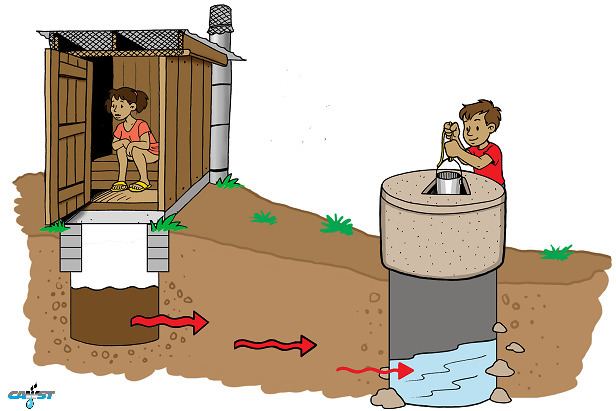Specialty Infectious disease | ||
 | ||
Waterborne diseases are caused by pathogenic microorganisms that most commonly are transmitted in contaminated fresh water. Infection commonly results during bathing, washing, drinking, in the preparation of food, or the consumption of food that is infected. Various forms of waterborne diarrheal disease probably are the most prominent examples, and affect mainly children in developing countries; according to the World Health Organization, such diseases account for an estimated 3.6% of the total DALY global burden of disease, and cause about 1.5 million human deaths annually. The World Health Organization estimates that 58% of that burden, or 842,000 deaths per year, is attributable to unsafe water supply, sanitation and hygiene.
Contents
Overview
The term "waterborne disease" is reserved largely for infections that predominantly are transmitted through contact with or consumption of infected water. Trivially, many infections may be transmitted by microbes or parasites that accidentally, possibly as a result of exceptional circumstances, have entered the water, but the fact that there might be an occasional freak infection need not mean that it is useful to categorise the resulting disease as "waterborne". Nor is it common practice to refer to diseases such as malaria as "waterborne" just because mosquitoes have aquatic phases in their life cycles, or because treating the water they inhabit happens to be an effective strategy in control of the mosquitoes that are the vectors.
Microorganisms causing diseases that characteristically are waterborne prominently include protozoa and bacteria, many of which are intestinal parasites, or invade the tissues or circulatory system through walls of the digestive tract. Various other waterborne diseases are caused by viruses. (In spite of philosophical difficulties associated with defining viruses as "organisms", it is practical and convenient to regard them as microorganisms in this connection.)
Yet other important classes of water-borne diseases are caused by metazoan parasites. Typical examples include certain Nematoda, that is to say "roundworms". As an example of water-borne Nematode infections, one important waterborne nematodal disease is Dracunculiasis. It is acquired by swallowing water in which certain copepoda occur that act as vectors for the Nematoda. Anyone swallowing a copepod that happens to be infected with Nematode larvae in the genus Dracunculus, becomes liable to infection. The larvae cause guinea worm disease.
Another class of waterborne metazoan pathogens are certain members of the Schistosomatidae, a family of blood flukes. They usually infect victims that make skin contact with the water. Blood flukes are pathogens that cause Schistosomiasis of various forms, more or less seriously affecting hundreds of millions of people worldwide.
Long before modern studies had established the germ theory of disease, or any advanced understanding of the nature of water as a vehicle for transmitting disease, traditional beliefs had cautioned against the consumption of water, rather favouring processed beverages such as beer, wine and tea. For example, in the camel caravans that crossed Central Asia along the Silk Road, the explorer Owen Lattimore noted, "The reason we drank so much tea was because of the bad water. Water alone, unboiled, is never drunk. There is a superstition that it causes blisters on the feet."
Socioeconomic impact
Waterborne diseases can have a significant impact on the economy, locally as well as internationally. People who are infected by a waterborne disease are usually confronted with related costs and not seldom with a huge financial burden. This is especially the case in less developed countries. The financial losses are mostly caused by e.g. costs for medical treatment and medication, costs for transport, special food, and by the loss of manpower. Many families must even sell their land to pay for treatment in a proper hospital. On average, a family spends about 10% of the monthly households income per person infected.
